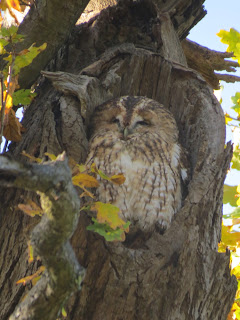Following a heavy frost the day turned out to be nice and sunny, perfect for a trip down to north Essex. First port of call was Abberton Reservoir, which is huge in area, almost like an inland sea.
This was all new to me as I haven't explored this area of the country for some years (maybe 20+), despite it being relatively close to where I live. The reservoir seem to be going through a transformation, as all the facilities were brand new, with newly planted trees round the reserve.
It is not an easy place to birdwatch as there is only limited access, only on the southern shore, and two causeways that cut across it at different points.
First access point was the Visitor Centre a nice brand new monument to man's achievement over nature. The reserve area sticks out into the reservoir with hides on three sides. Out on the great expanse of water there were few birds about, they were mostly hanging round the edges. The sheer numbers of ducks (claimed to be over 40,000 present) had me hoping at there would be huge flocks, but there weren't any really.
As the reservoir was so big, most birds were too distant to photo. Here are two pictures of two PHEASANTS squaring off.
After the visitors centre, then across one causeway to a screen that looked across Wigborough Bay. For some reason this was very attractive to PINTAIL with more than a hudred present - easily the commonest duck there. Also present on the mud were small flocks of GODWIT and DUNLIN.
The second causeway, to the south of the visitor's centre was called Layer Breton and whilst it didn't have the numbers of birds, it had the variety. The only duck present was a female SMEW with its beautiful red headed plumage. A WATER RAIL was present in a small clump of reeds, whilst even better a BITTERN was seen flying across the back end of the reservoir between clumps of reeds.


















